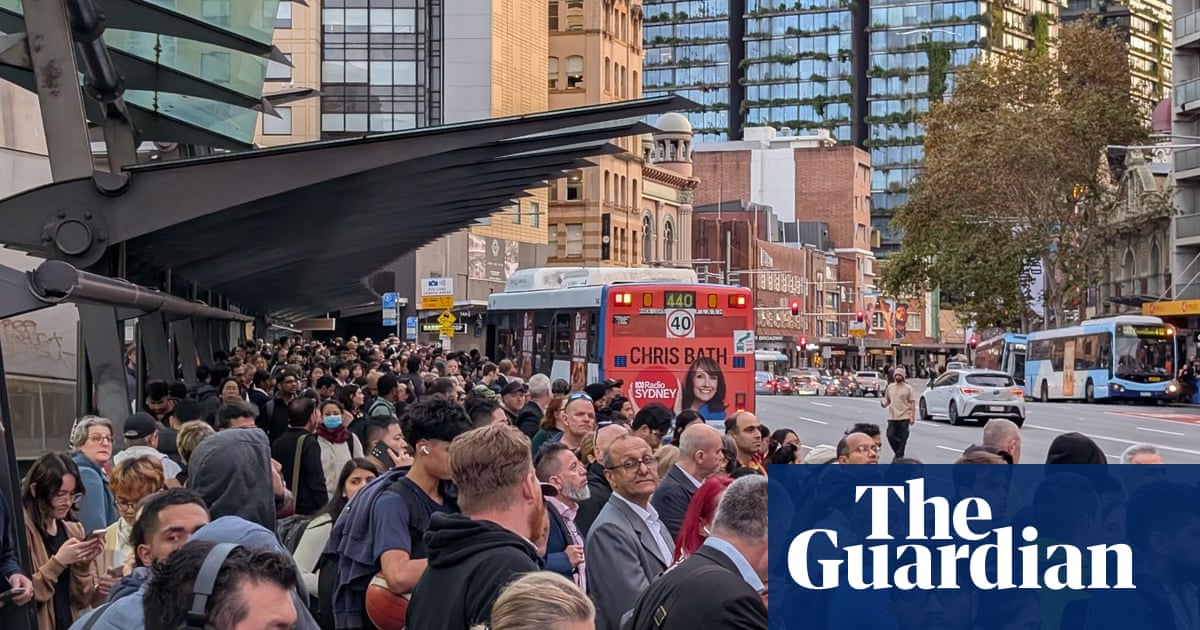Sydney’s train network has been thrown into chaos after high-voltage wire collapsed on the top of a train, trapping 300 passengers and causing disruption to lines going in and out of centralSydney.
Howard Collins, the coordinator general forTransportfor NSW, told reporters on Tuesday afternoon response teams were working to ensure the correct isolations were put in place to remove the 300 passengers on that train near Strathfield station and the trains around it which were caught when the power was switched off.
“The most important thing here is safety, making sure we do that under safe conditions and there’s no risk of the power being switched on by accident or other means,” Collins said.
“So once we’ve done that, our own response team, plus also the assistance of police and other emergency services, will safely evacuate those people off the train and to the nearest station.”
Sign up for Guardian Australia’s breaking news email
Transport engineers needed to make sure the correct isolations were in place, and earthing bonds were put on before passengers could be let off the train.
“It’s life threatening if you get very near or touch wires with that amount of voltage and ambient – it will kill you straight away,” Collins said.
There were significant delays expected for the T1 (North Shore and Western), T2 (Leppington and Inner West), T3 (Liverpool and Inner West) and T8 (Airport and South) lines as well as services to Newcastle via Strathfield as a result of theissue. The T4 (Eastern Suburbs and Illawarra) line was not affected.
Collins said the issue should be fixed on Tuesday night, but advised commuters to check the news in the morning.
Transport for NSW advised people to plan for extra travel time or consider using Metro services between Epping, Chatswood and Central, or alternative bus routes.
Collins said the alternatives were very limited, so people should avoid using the rail network where possible, but lines cannot be resumed until the wire on top of the train had been made safe.
Sign up toBreaking News Australia
Get the most important news as it breaks
after newsletter promotion
Collins said Uber had put in a price surging cap to prevent massive price hikes for the ride-share service.
It was too early to say what brought the cable down, Collins said, but the overhead wire was “maintained to a very strict standard”.
“But like anything mechanical, there may be a reason why this has occurred,” he said.
“It is very unusual but does happen on overhead wire lines around every state and around the globe.”
